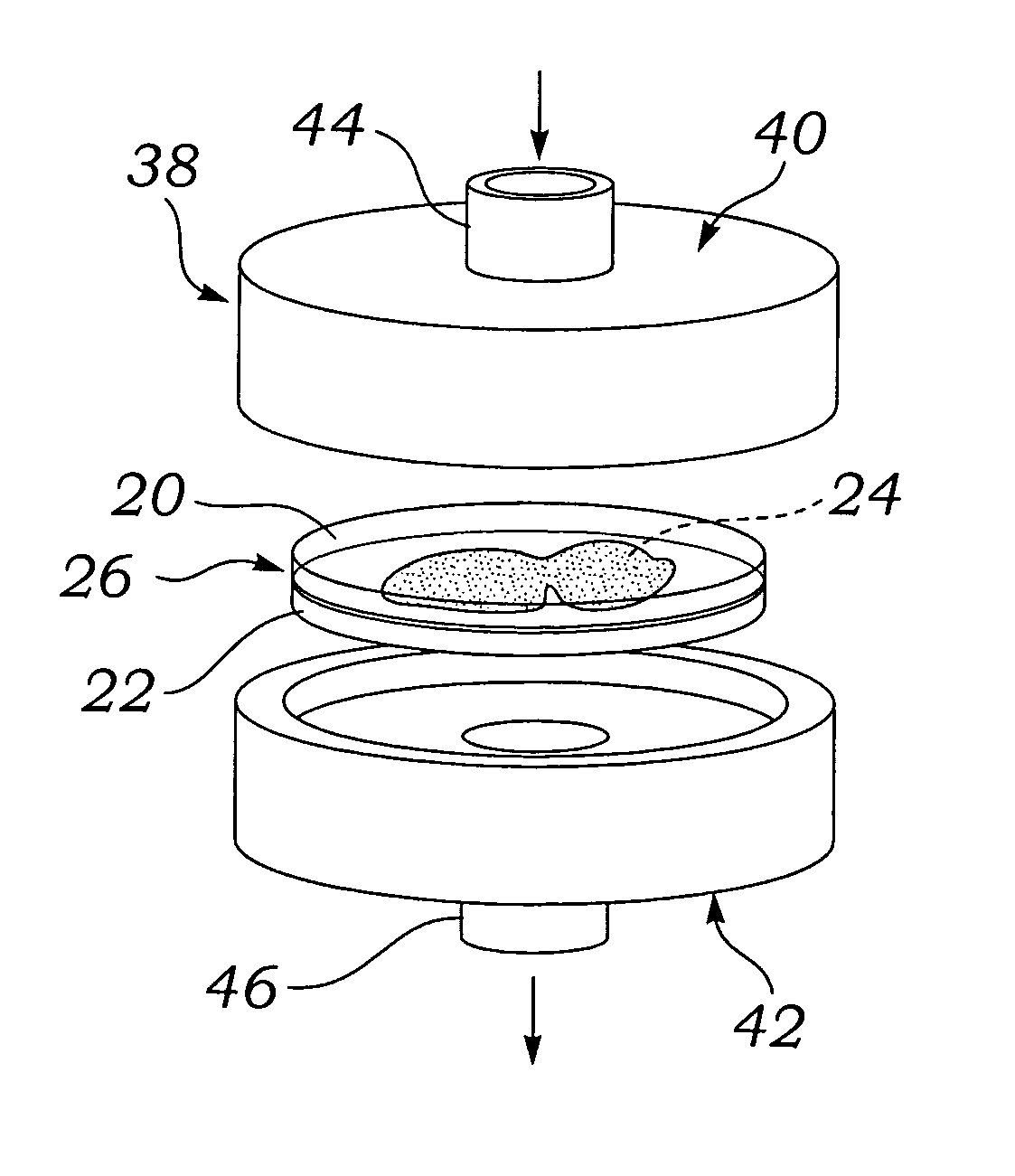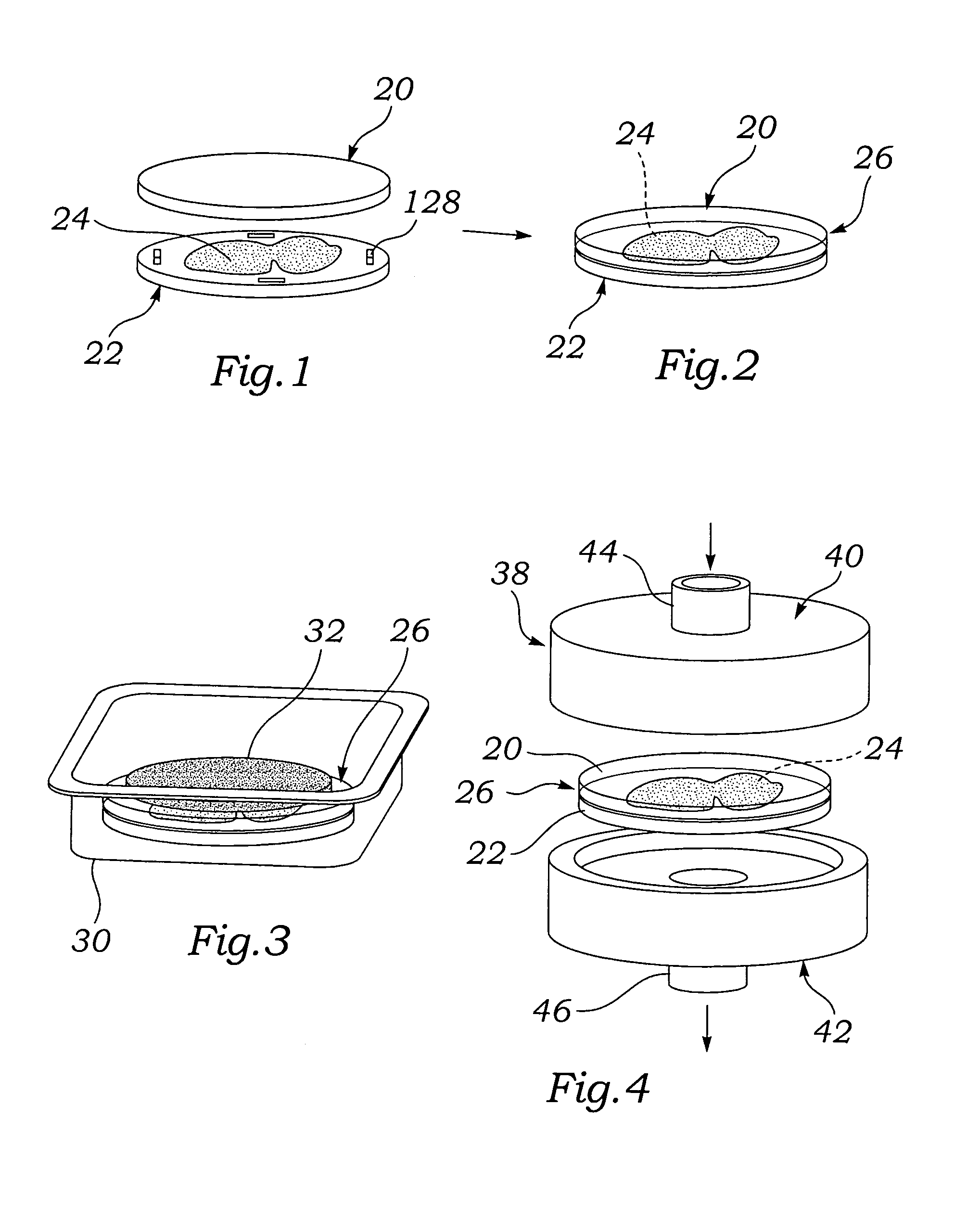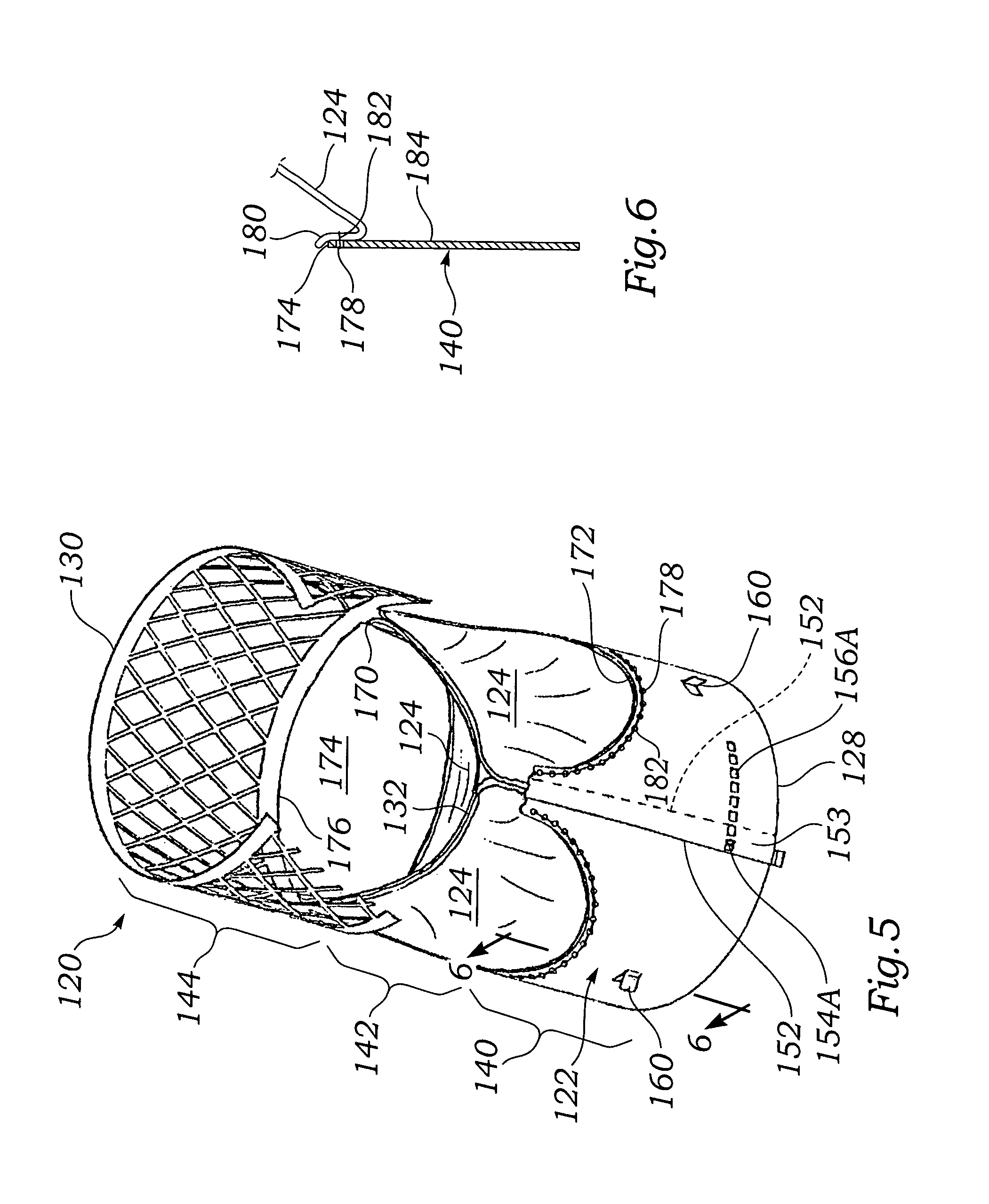Compressed tissue for heart valve leaflets
a heart valve and tissue technology, applied in the field of medical devices, can solve the problems of reduced tissue yield, unfit leaflet formation, long recovery period, etc., and achieve the effect of reducing the insertion profile, reducing the insertion volume, and reducing the yield of tissu
- Summary
- Abstract
- Description
- Claims
- Application Information
AI Technical Summary
Benefits of technology
Problems solved by technology
Method used
Image
Examples
Embodiment Construction
[0026]The present invention involves various means for compressing tissue sheet to reduce its thickness for use in medical implants, in particular for use as leaflets in heart valves. It is believed that such tissue sheet compression is novel and has many applications in the medical implant field. For example, the reduced thickness tissue sheet may be used in conventional heart valves, and venous valves, as well as minimally invasive heart valves. One specific example, of a conventional heart valve that may utilize tissue in accordance with the present invention is the Carpentier-Edwards® PERIMOUNT® Pericardial Bioprosthesis, available from Edwards Lifesciences of Irvine, Calif. The basic construction of the PERIMOUNT® valve is seen in U.S. Pat. No. 4,501,030, which disclosure is expressly incorporated herein by reference. An example of a minimally-invasive valve that may utilize tissue in accordance with the present invention is found in U.S. Pat. No. 6,733,525, issued May 11, 2004...
PUM
 Login to View More
Login to View More Abstract
Description
Claims
Application Information
 Login to View More
Login to View More - R&D
- Intellectual Property
- Life Sciences
- Materials
- Tech Scout
- Unparalleled Data Quality
- Higher Quality Content
- 60% Fewer Hallucinations
Browse by: Latest US Patents, China's latest patents, Technical Efficacy Thesaurus, Application Domain, Technology Topic, Popular Technical Reports.
© 2025 PatSnap. All rights reserved.Legal|Privacy policy|Modern Slavery Act Transparency Statement|Sitemap|About US| Contact US: help@patsnap.com



